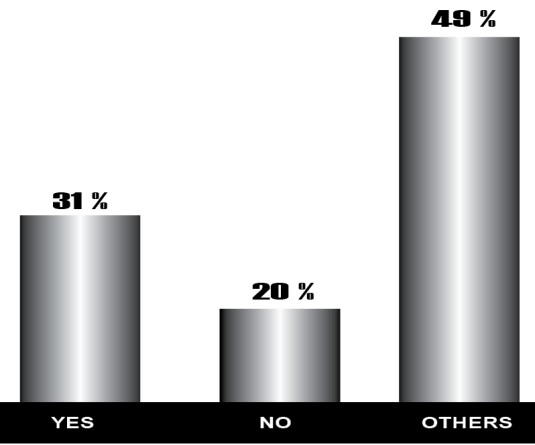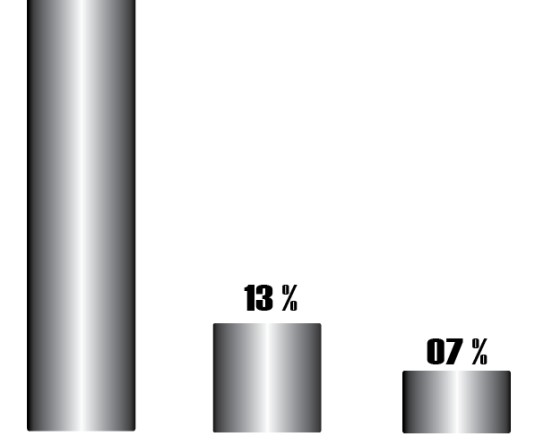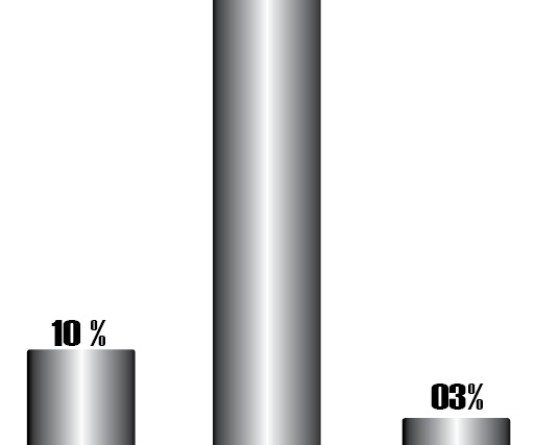
Yes:
• (I) Because of the influence of Korean culture on them. (II) Easily living and lack of dignity of labour.
• Failure to teach mother tongue by families specially in urban areas where Nagamese is being increasingly spoken at homes is the biggest and most important basic failure of our time because without language how can one pass down folk songs and history in the language of our fore-parents. The successive state governments are equally responsible for failure to come up with a curriculum that emphasises on our history and culture right from the primary level.
• I see most of them are not aware of their history, our history, the Naga history and its realities that made us who we are today, leading to identity crisis, within. Universities and educational institutes and Naga communities within Naga areas should start addressing with learning our many good ancient practices that were sustainable, instead of the Caste system, Mughals, Rajputs and sanskritisation of our cultures, those above are alien to our traditions, customs and racial reality, even though most have studies others cultures, time to tune in to our historical, political and social realities, that will lead to clarity for a start.
• In the age of rapid technological advancement many young people are more into the influence of western culture, and lifestyle. The younger generation is ignorant of understanding their roots and history.
• Lack of mother tongue subject in primary schools
• Mobile phones have drastically taken away the younger generation from learning & inheritance of Traditional values and the Naga history.
• More focus on the western influence
• Much of history seems to have been written with 'colonial glasses' on. When writers cite hobbyist colonial commissioners' works to write about Nagas, one can't help but feel disconnected. And post independence Naga history feels like the Naga community trying to play catch up with the rest of India and the West, like constantly looking to the future with no sense of today or yesterday.
• The leading factors are - Lack of Documentation; Generational Gap; Modernization and Urbanization; Curriculum limitations; Identity and belongings; Digital distractions; Global influences.
• The so called media world constantly reminds me the history is boring and not aesthetic and maybe I have been accustomed to those sayings.
• The westernization and Koreanisation of the Naga youths in practice is the sole reason.
• The younger generation is disconnected from their history. The first main factor is the loss of reading habits, especially reading ancient or historical books. The other is their disinterest in listening to the stories told by the oldest men and women in their villages. Today we are relying on books written by the British and outsiders as if they hold our genuine historical background. The younger generation must have the patience and inclination to research and record historical events before they completely vanish.
• The younger generation of the Nagas is increasingly disconnected from their ancestral history and cultural heritage. Naga identity, rooted in a rich pre-colonial past that predates modern ethnic consciousness, has been significantly eroded by colonial rule and the subsequent imposition of Western systems and thought. As a result, much of the indigenous knowledge, traditions, and ways of being have been lost or forgotten. The colonial encounter not only altered political structures but also reshaped worldviews, replacing traditional modes of education, governance, and spirituality with Western institutions. Today, many Nagas navigate life through a foreign framework—schooling, employment, economic survival—often devoid of cultural meaning or spiritual depth. This dislocation has led to an existential crisis, where indigenous identity is fragmented, and the sense of self is mediated through external values. Without a strong cultural foundation, the Naga people risk losing not only their history but also the deeper meanings of life embedded within their ancestral wisdom.
• Too much of commodification of our culture where just celebration of festivals such as Hornbill for a few days in a year is no way to ensure actual and embedded learning of our culture. History, traditions and our way of life can be passed effectively from one generation to the next generation only if our education system is geared towards letting the younger generation appreciate our culture from a young age.
• With the rise in technology and having easy access digitally to seeing other countries culture and especially the western, we are easily adapted to the way of when it comes to copying their culture, way of living and style. We can enjoy their culture but we shouldn't forget the roots of where we come from.
• Yes most Naga youths from Nagaland do not understand the basic history of how we have come this far or take things from granted. We have been fed with a mindset that we will die out of hunger if we stay as a separate nation. It is so sad to see our younger generations getting further away from how we reached here. Diluted minds have manipulated us successfully.
• Yes they are, because our history is not taught in schools
• Yes, the younger Naga generations are disconnected from their history. I do not blame the younger generations because their parents did not educate them. But Naga generations are in a limbo because without knowing their roots, the younger Nagas will be completely lost and will not know their own identity. Nagas are becoming more Indianised and the effect of Bollywood is becoming obvious.
• Yes, very much. Many young Nagas today are becoming disconnected from their history due to modern lifestyles, urbanization, and the decline of traditional storytelling. As more youth move to cities for education and work, they often grow distant from their culture and roots. Traditional customs and oral histories are not passed down as they once were, and schools don't teach enough about Naga history. The influence of Western education and religion also led to the loss of some traditional practices. Some young people are now trying to reconnect with their heritage through social media, which offers hope for a cultural revival. However, this revival may never be truly meaningful unless it moves beyond the digital space and is practiced and lived in reality. Personally, as a millennial, I feel a growing sense of nostalgia for our roots. We are the generation that has experienced both the old and the new worlds. But for Gen Z and beyond, this connection may be harder to sustain unless conscious efforts are made. It's never too late to revive Naga culture, and a good way forward would be to incorporate more meaningful cultural events and promote traditional crafts, music, and customs, especially during major festivals like the Hornbill Festival. These events shouldn't be just for show, but should deeply reflect the origins and history of what is being showcased. Considering the fact that many foreign and domestic tourists attend this festival, anyone wearing traditional attire or accessories should at least have a basic understanding of what they are representing, whether the item is original or modernized, and whether it belongs to a particular tribe or is more general in use. Wearing something traditional should carry meaning, not just serve as decoration. When tourists ask about it, it becomes an opportunity to share our heritage with pride. But if the person wearing it doesn't know its significance, it sends the wrong message and weakens the cultural value. Awareness, even at a basic level, is important, especially in such public cultural spaces. I say this because I've witnessed instances where young men and women, when asked by tourists, could not explain the significance of the traditional necklace, mekhala, waistcoat or other accessories they were wearing. This reflects a gap in knowledge and connection. Entrepreneurs who craft and sell traditional items should not do so merely for commercial purposes, but with an understanding and respect for their cultural roots. When selling, they should share the item's origin, history, how and when it is worn, and how to care for it. In this way, buyers, whether locals or outsiders can gain knowledge, and the culture can be passed on with meaning and pride.
• Yes, younger Naga generations are increasingly disconnected from their history due to: 1. Modernization and Globalization: Exposure to global culture via media and technology shifts focus from traditional Naga values to modern lifestyles. 2. Educational Shifts: English and Nagamese as primary languages in education reduce familiarity with tribal dialects and oral histories. 3. Urbanization: Migration to urban areas weakens ties to village-based cultural practices and ancestral knowledge. 4. Generational Gap: Older generations' reluctance to adapt and engage with youth perspectives limits the transmission of historical knowledge. 5. Conflict Legacy: Past conflicts disrupted cultural continuity, reducing opportunities for younger Nagas to learn traditional practices. Efforts like the Hornbill Festival and Naga Morung aim to bridge this gap by promoting cultural pride and historical awareness.
• Yes. The younger Naga generations are completely lost. Not only do they not know their own history, but they seem to have lost their sense of being a Naga. The younger generation are much more educated and in tune with the world, but if they do not know their roots, how can they go far in the world?
• Yes. Very little emphasis is given on Nagaland history in the primary and middle school level textbooks. Instead of having a curriculum that emphasises on cultures of Nagaland as a way of life, just celebrating for a few days on festival days, with pomp and show and forgotten thereafter, is not the way to ensure passing down of cultures of Nagaland to the younger generations.
No:
Others:
• In this age of globalisation, it is, in my opinion, normal for young people to try to emulate and immerse themselves in popular cultures. This is also the trend among youngsters in Nagaland which is often critiqued by Naga conservatives. Needless to say that the 'younger generation' cannot be clubbed together into a composite whole with each having the same traits, however with the rise in literacy rate in Nagaland and multiple books on Naga history made available, the younger generation have an edge and are just a few pages away from 'reconnecting' with their history, and a lot of them are doing so. An amalgamation of good values from foreign cultures with our roots grounded in one's own history/tradition is the key, and many of the younger Naga generation are, I believe, walking the right path in doing so. Balance is the key essentially, as rigid traditionalism leads to stagnation and even regression of society, whereas loss of one's history/tradition leads to reduced social cohesion & fragmentation of community values.
• Today the TaFMA has become one of the most powerful agency in influencing young minds. Instead of helping the younger Naga generation to know about their history, culture and art, the TaFMA is only influencing with other foreign cultures. This is taking younger Naga generation away from their history and culture.






